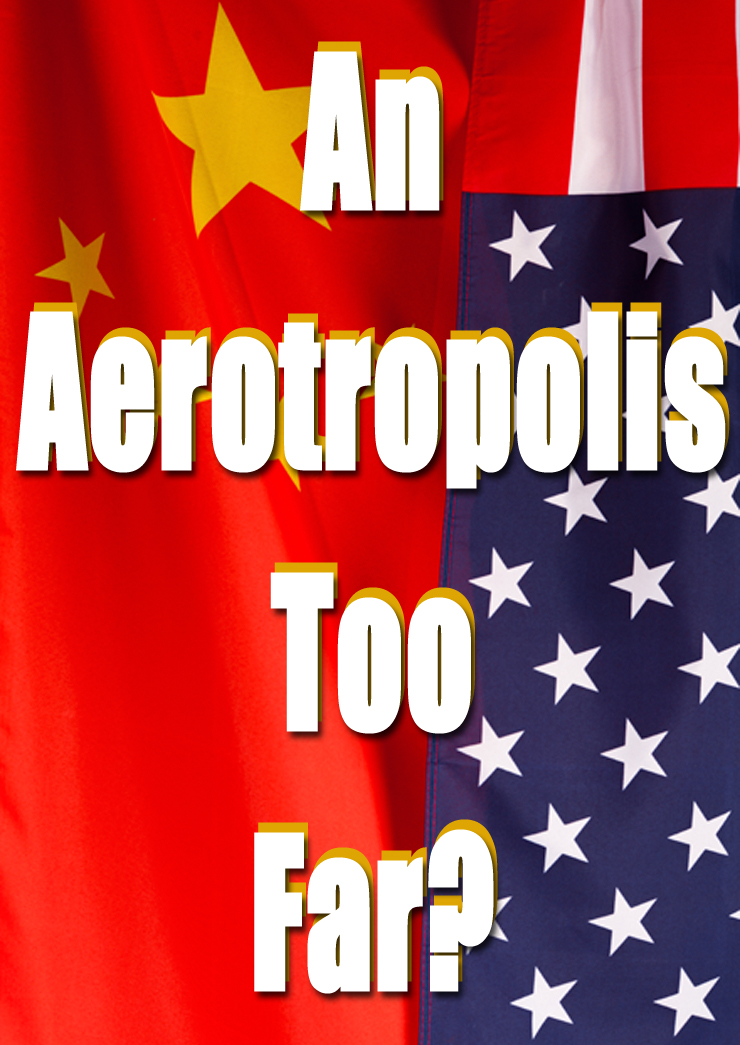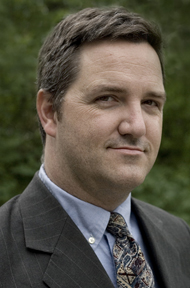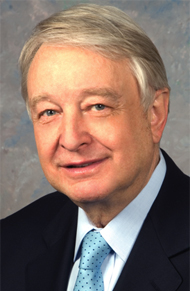St. Louis Air Cargo—An
Aerotropolis Too Far?

In USA, if one believes its proponents
– and one shouldn’t – the Midwestern State of Missouri
Legislature has exhausted its session before it had time to commit funds
that would enable St. Louis Lambert International Airport to become
the Midwest China Hub.
But some think that this bid may be an
“Aerotropolis Too Far,” a bad idea or maybe even a big,
fat lie.
“How?” you might ask and if
so, you’d already be more diligent than legislators who supported
about $400 million in public subsidies for this white elephant in waiting.
That the State of Missouri has already
wasted state and federal public dollars provides a case of carelessness
and impropriety of the sort inspiring taxpayer revolts across the state
and nation.
St. Louis area business leaders and airport
operators propose to divert regional air cargo now dominated by Chicago
O’Hare International Airport to what locals call the “Midwest
China Hub” and “the Big Idea”. Rather than test the
likelihood of the hub’s success, proponents and their enablers
simply assume Lambert will attract the required service and then promise
benefits based on that success. The proposition’s champions and
their consultants performed a meager analysis. Shockingly, the State
of Missouri has already directed millions in public money on that basis
and the Missouri Legislature almost approved hundreds of millions in
additional support without any independent analysis.
Had an independent analysis been conducted,
overwhelmingly critical concerns would have been exposed. Mere
context is damning enough. According to Airports Council International
– North America, St. Louis ranked 39th among North American airports
end of calendar year 2010. By comparison, Kansas City International
Airport was ranked 45th and until 2009 had led St. Louis for a decade.
In fact, St. Louis not only trailed Kansas City but also Des Moines.
During a decade that found the U.S. air cargo industry in collapse,
St. Louis’ annual air cargo volume declined 20% comparing 2010
levels with calendar year 2000. St. Louis’ air cargo slide is
not atypical of the industry but nothing suggests it is in expansion
mode.
Worse, an unprecedented surplus of on-airport
air cargo capacity exists after a decade of nationwide contraction that
witnessed the disappearance of such formerly common on-airport all-cargo
names as Airborne Express and Emery Worldwide, as well as sharp contraction
by BAX Global and DHL. Medium-sized U.S. airports are fortunate to still
have both UPS and FedEx. The two integrated carriers account for at
least 90% of air cargo at most U.S. airports, including St. Louis.
With hubs in Louisville and Memphis and
regional hubs in Rockford, IL and Indianapolis, IN, neither UPS nor
FedEx (respectively) have any foreseeable need for a significantly expanded
role at Lambert. Even St. Louis’ champions concede that point
but without registering that therefore their cargo efforts must advance
without carriers that presently account for almost all of their already
unimpressive market. Almost all examples of successful alternative gateways
in the U.S. are anchored by one of these integrated carriers.
During the same period, the passenger
industry also contracted with TWA acquired by American, Continental
by United and Northwest by Delta. These consolidations created additional
surplus on-airport cargo space and in the skies, also affected capacity
because space offered in bellies of passenger aircraft is critically
important to international air cargo transport. Dominant Asian and European
air cargo carriers operate both passenger and cargo flights, maximizing
their efficiency by providing both whenever possible in gateways like
Chicago. Freight forwarders – who account for the majority of
international air cargo bookings – rely on gateways to provide
the maximum in network connectivity but St. Louis’ proponents
hope forwarders will ignore superior flight frequencies, international
destinations and mix of operators (both all-cargo and belly-offering
passenger carriers) at Chicago O’Hare.
 Webber—"Missouri
should not only abandon consideration of future funding, it should
seek to recover what has already been wasted. Legislators and
state bureaucrats, as well as members of the media who lazily
parroted talking points, should repent for having so carelessly
treated a potential obligation of hundreds of millions of taxpayer
dollars, even as so many much more worthy priorities confront
Missouri." Webber—"Missouri
should not only abandon consideration of future funding, it should
seek to recover what has already been wasted. Legislators and
state bureaucrats, as well as members of the media who lazily
parroted talking points, should repent for having so carelessly
treated a potential obligation of hundreds of millions of taxpayer
dollars, even as so many much more worthy priorities confront
Missouri."
|
 Guenter
Rohrmann, Building China Hub For St. Louis— in December
2009 the St.
Louis Post Dispatch reported "Mr. Rohrmann last
month agreed to a $931,000 consulting deal to persuade manufacturers
and air freight companies that St. Louis is a good place from
which to ship cargo overseas, particularly to China." Guenter
Rohrmann, Building China Hub For St. Louis— in December
2009 the St.
Louis Post Dispatch reported "Mr. Rohrmann last
month agreed to a $931,000 consulting deal to persuade manufacturers
and air freight companies that St. Louis is a good place from
which to ship cargo overseas, particularly to China."
|
St. Louis’ big idea is a $400 million
speculative venture that from inception excludes participation from
global integrated carriers DHL, FedEx and UPS that account for about
90% of the current St. Louis market but already have established hubs
in the region. Worse still, it will compete with Chicago O’Hare,
which hosts international and domestic passenger hubs for American and
United Airlines, as well as international gateway operations for numerous
Asian, European and Latin American passenger carriers. O’Hare
also hosts freighter operations from many of these passenger carriers,
as well as international all-cargo airlines such as Japanese operator
Nippon Cargo Airlines and European all-cargo power Cargolux.
Before St. Louis even begins, almost
all of the domestic and international market has already been excluded!
Moreover, contraction in the Chicago market (not nearly as bad as St.
Louis’ 20% but still about 6% for O’Hare over the same 2000
– 2010 period) and one of America’s most ambitious expansion
programs will greatly enhance the proven gateway’s capacity and
not coincidentally its operating efficiency. Unlike St. Louis, Chicago’s
program has already been scrutinized and approved by the industry and
is in fact, well underway. St. Louis entirely speculative “big
idea” will confront a proven dominant competitor in peak form.
With no evidence, “big idea”
champions believe shippers need an alternative to O’Hare, suggesting
that international air cargo shippers are disadvantaged by having to
truck freight a few hours past St. Louis to Chicago but many international
shippers already truck shipments from the Midwest much further to gateways
like Los Angeles and Miami. Trucking company Sterling Transportation
Inc. does nothing but truck freight between Miami and Los Angeles to
leverage the superior Latin American access of the former and the Asian
superiority of the latter. So when trucking economics sustain competitive
advantages on segments as distant as Miami and Los Angeles, the distance
from St. Louis to Chicago hardly seems excessive.
 “Big idea” proponents offer
such testimonials as area cattle exporters being significant resources
and beneficiaries of the Midwest China Hub but if such demand exists,
St. Louis would at least already have international livestock charter
flights. With strong support from the Missouri Department of Agriculture,
Kansas City International Airport actually built a livestock-specific
export facility in the 1990’s but in roughly twenty years, the
facility has been used for its purpose only a handful of times because
of a lack of demand. Livestock breeders are able to ship hundreds of
future heads of cattle as semen in test-tubes – hardly the basis
for supporting scheduled service. Breeding stock of livestock is still
occasionally exported “on the hoof” but neither it, nor
more common slaughter stock is shipped regularly enough to even remotely
anchor this development.
“Big idea” proponents offer
such testimonials as area cattle exporters being significant resources
and beneficiaries of the Midwest China Hub but if such demand exists,
St. Louis would at least already have international livestock charter
flights. With strong support from the Missouri Department of Agriculture,
Kansas City International Airport actually built a livestock-specific
export facility in the 1990’s but in roughly twenty years, the
facility has been used for its purpose only a handful of times because
of a lack of demand. Livestock breeders are able to ship hundreds of
future heads of cattle as semen in test-tubes – hardly the basis
for supporting scheduled service. Breeding stock of livestock is still
occasionally exported “on the hoof” but neither it, nor
more common slaughter stock is shipped regularly enough to even remotely
anchor this development.
Given that Kansas City International Airport
is roughly equivalent to St. Louis in cargo volumes (having led St.
Louis until 2009), is further from Chicago in terms of offering a discrete
alternative and has always been perceived by the air cargo industry
as much more cargo-friendly, folks in the western half of the state
should be infuriated at statewide tax dollars being directed at St.
Louis but not that Kansas City should be given another $400 million
but rather this idea is a non-starter on both sides of the state. Most
air cargo industry experts would likely slot Indianapolis and even Rockford,
IL (to name but two) as far better prospects to attract such service
than St. Louis or Kansas City.
By now, one may wonder how Missouri officials
ever wasted more than $1 million taxpayer dollars on this effort already
– let alone considering another $400 or so million in future subsidies.
The St. Louis Business Journal reports that well connected
St. Louis area lawyer Steve Stone and his law firm, Stone, Leyton and
Gershman, have contracts up to $400,000 from the Midwest-China Hub Commission,
the City of St. Louis and the RCGA (St. Louis Regional Chamber &
Growth Association) for work related to securing air cargo flights.
Stone’s contract with the China
Hub Commission for business consulting is for $15,000 per month ($180,000/year)
and his work for the city for writing legislation that will provide
tax incentives for the effort is for $100,000. His contract with the
RCGA will be between $100,000 and $120,000 this year. As will be detailed
momentarily, much of the Commission’s budget comes from state
and federal sources, so Stone is being paid by us to lobby for our money.
Drawing further from the Business
Journal’s piece, the commission has an annual operating budget
of about $1.5 million, including three major contracts totaling $804,000
per year, including $180,000/year for Jason Van Eaton, the commission’s
executive director (and his Spectrum Group consulting firm), and for
$450,000 a year with London Export Corp.’s Stephen Perry, a relative
of Stone and British exporter whose family has “long and deep
experience in Chinese trade”.
Were this effort solely dependent on St.
Louis area funding, it might be less irritating to those beyond its
metro area. However, the commission is funded with federal grants and
$100,000 annual contributions from presumably statewide entities the
Missouri Partnership and the Missouri Chamber of Commerce, as well as
most appallingly, the Missouri Department of Transportation and the
Missouri Department of Economic Development.
Project champions tout relationships in
China, but relationships with U.S. politicians are what have carried
the project. Detailed in “Fired Up! Missouri”4, the Missouri
state legislature was lobbied by U.S. Senator Christopher “Kit”
Bond (R-Mo.) to appropriate $12 million in federal stimulus funds for
the project with $10 million for renovation or construction of a new
building and $2 million for developing backhaul.
As reported in the St. Louis Beacon,
the effort was the beneficiary of a $1 million federal earmark requested
in the U.S. Senate appropriations bill for fiscal year 2010 by Sen.
Bond “for oversight, management, travel and outside support for
the Midwest China Hub Commission whose Executive Director is Bond’s
own former Chief of Staff, Jason Van Eaton who left Bond’s staff
amidst embarrassing disclosures of lavish spending of public money for
travel to Asia and far more serious concerns about his pivot role in
removing U.S. attorney Todd Graves.
Besides funding lavish travel for a former
congressional staffer whose past includes taxpayer outrages over travel,
a cargo director at the airport receives about $150,000 per year - at
least 50% more than pay for a comparable position for a major U.S. airport
operator – including Los Angeles World Airports and the Port Authority
of New York & New Jersey, operating two top twenty cargo airports
each.
Yet the “big idea” folks
think that air cargo development at the 39th largest cargo airport in
the U.S. is worth at least $50,000 per year more than a similar position
at the largest U.S. airports. The sheer audacity of “big idea”
champions is further revealed in their including up to 27 million square
feet of additional area warehouse space for well-connected local developers
to extract additional corporate welfare, including a developer who failed
to provide acceptable returns on past incentives. Those 27 million square
feet contrasts with regional hubs of FedEx and UPS – much larger
than anything St. Louis could achieve – which require only 300,000
to 500,000 sq. ft. With a target of 8 weekly international freighter
flights, St. Louis’ cargo facilities need would be closer to 100,000
to 200,000 sq. ft.
The audaciousness of St. Louis’
bid to rip off taxpayers statewide is particularly galling because provisions
exist for St. Louis to make an earnest bid without disgracing itself.
Airports operate in a closed funding loop, in which airport-generated
revenues are restricted from being diverted off-airport with the caveat
that they should also be self-sustaining, rather than depending on local
taxes from constituents who may not use the airport. Airport
operators submit to a rigorous long-term master plan and land use planning
process that ensures its forecasts must be credible with both the Federal
Aviation Administration (FAA) and its tenants, who presumably know the
industry. Cargo facilities may be developed by the airport operator,
itself, using its internally generated revenues and favorable bond treatment
or by partnering with private cargo facilities developers. The ability
to attract funding for such development and private partners is an excellent
test of the worthiness of expansion, especially when an unprecedented
surplus capacity of on-airport cargo facilities already exists. Yet,
St. Louis apparently needs to circumvent the vetting of the FAA, of
its airline tenants and especially of analysts not already in the pocket
of their “big idea” cronies.
Rather than merely revise the scale of
this project, Missouri should recognize that it has been hoodwinked
so badly that not only should the State abandon consideration of future
funding, it should seek to recover what has already been wasted. Legislators
and state bureaucrats, as well as members of the media who lazily parroted
talking points, should repent for having so carelessly treated a potential
obligation of hundreds of millions of taxpayer dollars, even as so many
much more worthy priorities confront Missouri.
Michael Webber
Editor's Note: Michael Webber is the president
of Webber Air Cargo, Inc., a consulting firm primarily serving cargo
planning needs of airport operators and civil aviation authorities.
While U.S.-based, he has completed multiple projects in Asia, Africa,
the Middle East and Latin America. On a consulting basis, he previously
managed cargo affairs for Airports Council International – North
America. He has recently completed cargo assignments for airport operators
in Chicago, Los Angeles, Miami, New York, San Francisco and Vancouver,
and has additional assignments underway for the City of Chicago Department
of Aviation, the Miami-Dade Aviation Department and the Alaska International
Airport System. Webberaircargo@aol.com |
 “Big idea” proponents offer
such testimonials as area cattle exporters being significant resources
and beneficiaries of the Midwest China Hub but if such demand exists,
St. Louis would at least already have international livestock charter
flights. With strong support from the Missouri Department of Agriculture,
Kansas City International Airport actually built a livestock-specific
export facility in the 1990’s but in roughly twenty years, the
facility has been used for its purpose only a handful of times because
of a lack of demand. Livestock breeders are able to ship hundreds of
future heads of cattle as semen in test-tubes – hardly the basis
for supporting scheduled service. Breeding stock of livestock is still
occasionally exported “on the hoof” but neither it, nor
more common slaughter stock is shipped regularly enough to even remotely
anchor this development.
“Big idea” proponents offer
such testimonials as area cattle exporters being significant resources
and beneficiaries of the Midwest China Hub but if such demand exists,
St. Louis would at least already have international livestock charter
flights. With strong support from the Missouri Department of Agriculture,
Kansas City International Airport actually built a livestock-specific
export facility in the 1990’s but in roughly twenty years, the
facility has been used for its purpose only a handful of times because
of a lack of demand. Livestock breeders are able to ship hundreds of
future heads of cattle as semen in test-tubes – hardly the basis
for supporting scheduled service. Breeding stock of livestock is still
occasionally exported “on the hoof” but neither it, nor
more common slaughter stock is shipped regularly enough to even remotely
anchor this development.